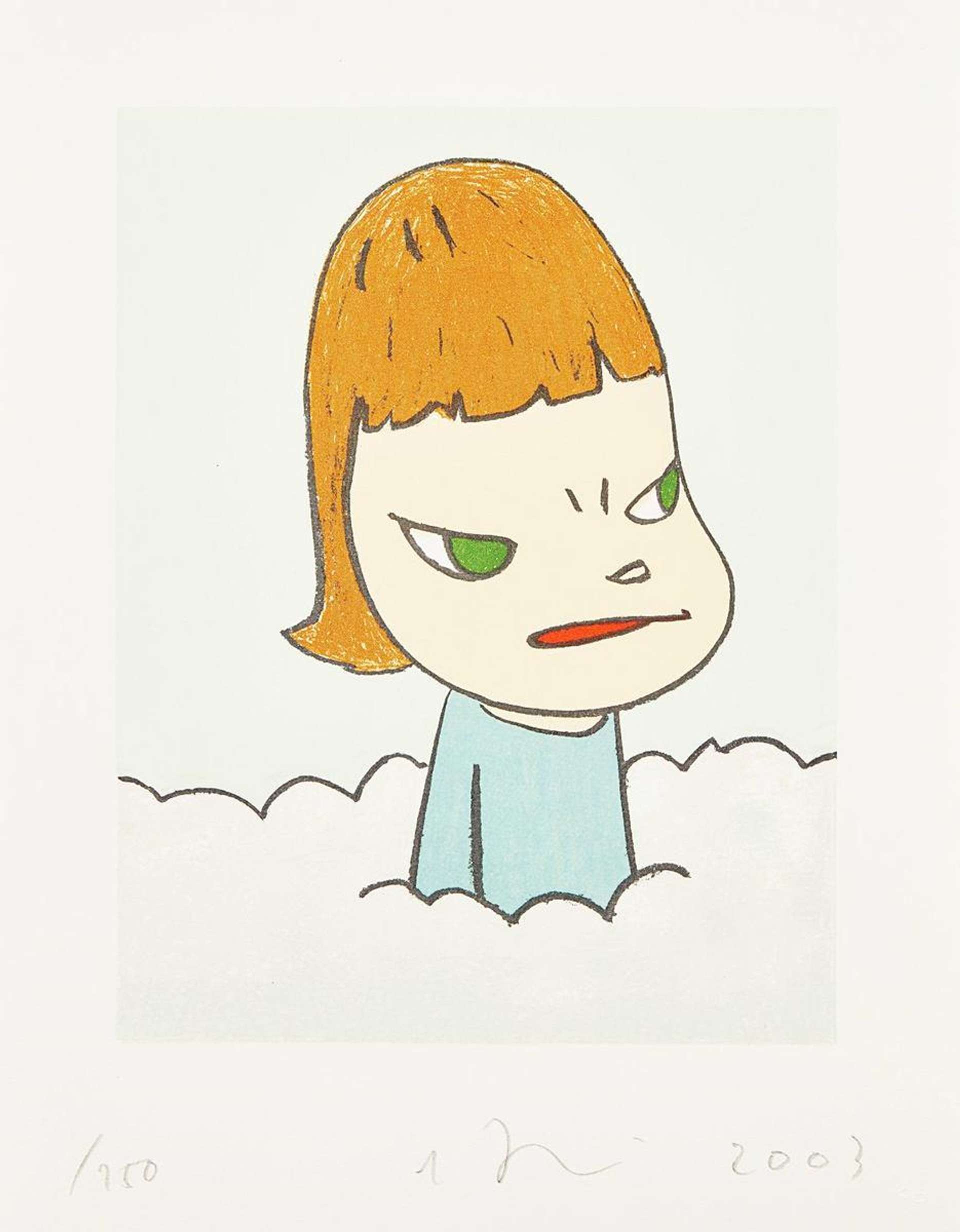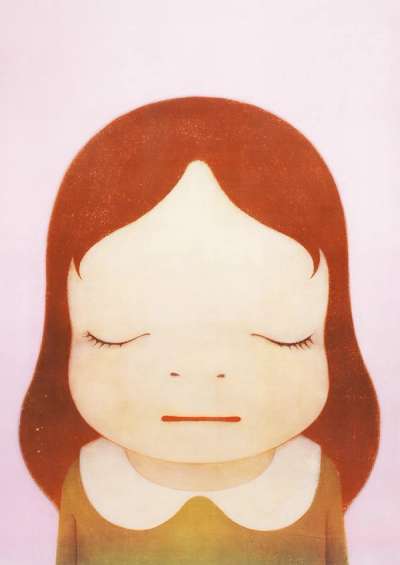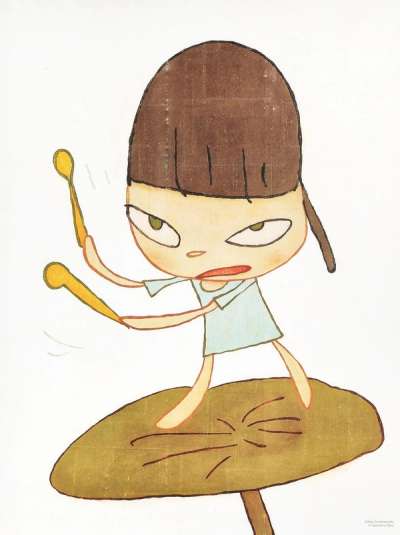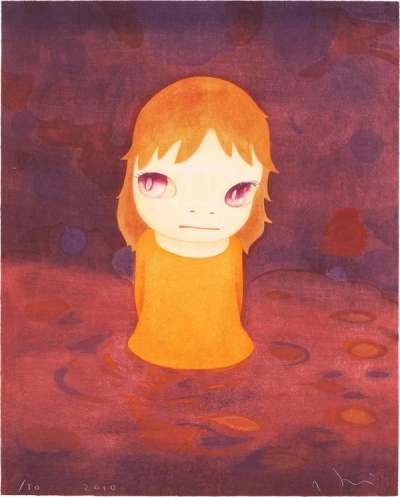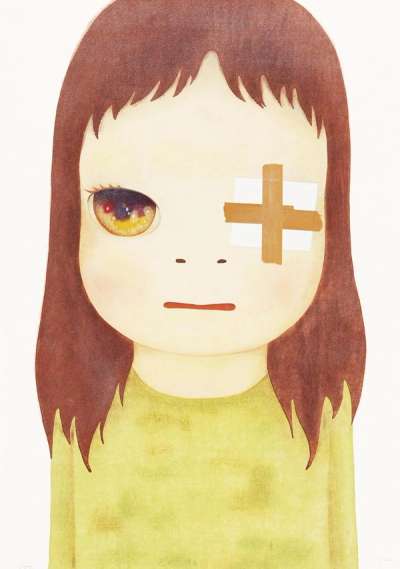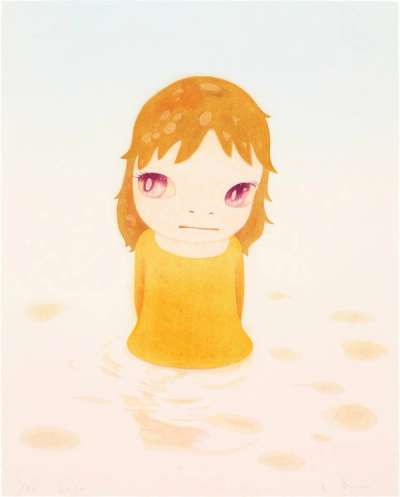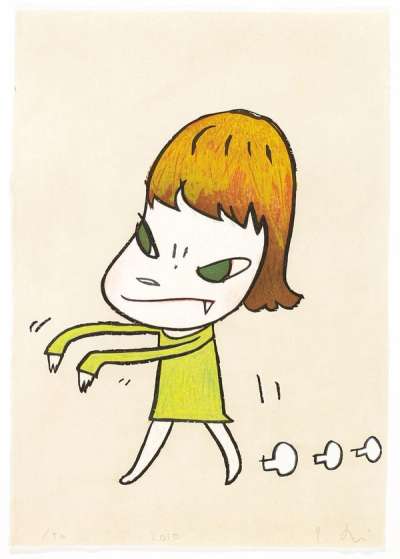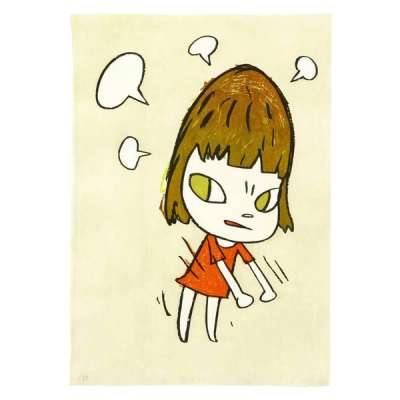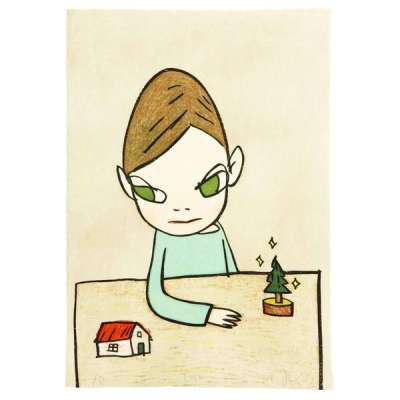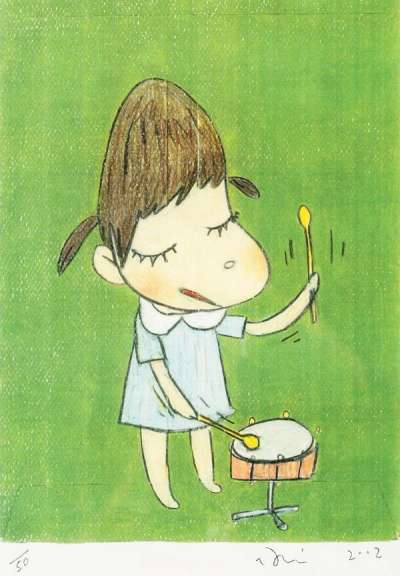 Image © Artnews / Yoshitomo Nara © 2021
Image © Artnews / Yoshitomo Nara © 2021
Yoshitomo Nara
70 works
Who is Yoshitomo Nara?
Yoshitomo Nara is a contemporary Japanese artist known for his iconic and instantly recognisable style that merges Pop Art with traditional Japanese culture. Nara's artworks feature childlike figures with oversized heads and expressive eyes, usually depicted in a variety of emotional states. His works evoke a sense of nostalgia and melancholy, while also incorporating elements of rebellion and street culture.
Nara was born in 1959 in Hirosaki, Japan, and spent his formative years surrounded by the rural landscapes of his hometown. He studied at the Aichi Prefectural University of Fine Arts and Music, where he honed his art practice. It was during this time that Nara became inspired by punk rock music and began exploring the underground art scene in Tokyo.
It was his Pacific Babies, his first American exhibition in 1995 that helped him gain more exposure and serve as the catalyst for his 2019 sale of Knife Behind Back for $25 million.
 Ocean Child © Yoshitomo Nara 1999
Ocean Child © Yoshitomo Nara 1999Yoshitomo Nara's Artistic Style and Influences
Nara's artistic style is characterised by its simplicity and emotional resonance. His works often feature a recurring cast of childlike characters, who display emotional states ranging from joy and innocence to anger and defiance. The figures are usually portrayed against a plain or abstract background, emphasising their expressive power and emotional impact.
Nara's art is influenced by a wide range of sources, including punk rock music, manga and anime, and traditional Japanese culture. His works often incorporate elements of rebellion and street culture. During his time in Germany, Nara became familiar with a loneliness he had once encountered during his childhood. He seems to largely credit this as a key influence in his works as he explained in an interview with Hideo Furukawa, “I found my style only after living in solitude. I couldn't have achieved my style without a good setting, without the help of the place and circumstances.”
A conversation about Yoshitomo Nara’s influences cannot be had without the Superflat movement. This movement pioneered by Takashi Murakami cultivates the blend of traditional Japanese art with contemporary pop culture.
 Rainy Day © Yoshitomo Nara 2002
Rainy Day © Yoshitomo Nara 2002The Pop Art Movement in Japan
The Pop Art movement in Japan emerged in the late 1950s and early 1960s, as artists sought to challenge the traditional forms of Japanese art and embrace the rapidly changing consumer culture of postwar Japan. The movement drew heavily on the influence of American Pop Art, which was characterized by its use of mass-produced images and consumer goods as subject matter.
Yoshitomo Nara is one of the most prominent figures in the contemporary Japanese Pop Art movement. His works reflect a unique blend of Japanese and Western influences, with a focus on the emotional impact of simple, childlike forms. Nara's works have been widely exhibited in Japan and around the world, and have helped to bring attention to the broader trend of contemporary Asian art.
 Image © KimonBerlin, CC BY-SA 2.0, via Wikimedia Commons / Pumpkin © Yayoi Kusama.
Image © KimonBerlin, CC BY-SA 2.0, via Wikimedia Commons / Pumpkin © Yayoi Kusama.Other notable figures in the Japanese Pop Art movement include Takashi Murakami, who has pioneered the "Superflat" movement, as well as artists like Yayoi Kusama, one of Japan’s most important artists who has had recent collaborations with Louis Vuitton. These artists share a common interest in blurring the boundaries between high and low culture, and in exploring the intersection of traditional Japanese art and contemporary pop culture.
The influence of the Japanese Pop Art movement can be seen in a variety of art forms, from painting and sculpture to fashion and graphic design. In recent years, there has been a growing interest in contemporary Asian art among collectors and investors, as evidenced by the rising prices of Murakami and other key figures at major art auctions.
As a leading figure in the Japanese Pop Art movement, Nara's works have been highly sought-after among art collectors and investors. His paintings and sculptures have been sold at major art auctions around the world, with prices often reaching into the millions of dollars. Nara's unique artistic style and emotional resonance have helped to elevate the profile of the Japanese Pop Art movement and to bring attention to the broader trend of contemporary Asian art.
With artists like Yoshitomo Nara leading the way, the movement continues to challenge traditional notions of art and to explore the intersection of culture, emotion, and mass-produced imagery.
 Pain © Yoshitomo Nara 2002
Pain © Yoshitomo Nara 2002Nara's Art Market Value
Yoshitomo Nara has been the subject of numerous solo exhibitions in galleries and museums around the world. His works have been exhibited at major institutions such as the Museum of Contemporary Art in Los Angeles and the Museum of Modern Art in Tokyo. Nara's exhibitions have been highly popular among both art critics and the general public, and have helped to establish him as one of the leading figures in contemporary Asian art.
Nara's works have also been highly valued on the art market, with prices often reaching into the millions of dollars. One of his most expensive works, "Knife Behind Back," sold for over $25 million at a Sotheby's auction in 2019, setting a new auction record.
A significant recent sale occurred on November 25, 2024, when his piece Baby Blue (1999) sold for HK$45,220,000 (approximately £4.55 million) at Phillips's Modern & Contemporary Art Evening Sale in Hong Kong. This sale marked the top lot of the auction and underscored Nara's significant market value.
Highly sought-after pieces like Cosmic Girl Eyes Open and My Little Treasure are on the wishlists of experienced collectors and new investors. Nara's high market value is a testament to the enduring appeal of his unique artistic style and emotional resonance, and may serve as inspiration for these emerging artists seeking to make their mark in the contemporary art world.
Nara's influence on the Japanese Pop Art movement has helped to establish a broader cultural appreciation for contemporary Asian art, and may inspire other artists from the region to explore similar themes and styles in their own work.
Investing in Yoshitomo Nara Artworks
Investing in Yoshitomo Nara artworks can be a wise decision for collectors looking to diversify their portfolios and tap into the growing demand for contemporary Asian art. With a track record of consistently high market values and a well-established reputation as one of the foremost figures in the Japanese Pop Art movement, Nara's works offer a unique opportunity for investors to both appreciate their artistic value and reap financial rewards.
 Yoshitomo Nara Value & Data Trends © MyArtBroker 2023
Yoshitomo Nara Value & Data Trends © MyArtBroker 2023Yoshitomo Nara's Place in Contemporary Art
Bridging Fine Art and Popular Culture
Nara's ability to straddle the worlds of both fine art and popular culture has helped to bridge the gap between these two spheres, and has contributed to a broader cultural appreciation for contemporary art and its ability to reflect and respond to social and political issues.
High Market Value and Global Appeal
Nara's high market value, which has made him one of the most valuable living artists in the world, speaks to the quality and emotional appeal of his works, and highlights the increasing demand for contemporary Asian art in the global art market.
Contributing to a Broader Cultural Landscape
Nara's place in contemporary art is reflected not only in his artworks and collaborations, but also in his contributions to the broader cultural landscape. His ability to connect with audiences across cultural and linguistic barriers has helped to establish him as an important voice in contemporary art.
 No Nukes! Love And Peace © Yoshitomo Nara 1999
No Nukes! Love And Peace © Yoshitomo Nara 1999The Legacy of Yoshitomo Nara
Yoshitomo Nara's legacy as a leading figure in the Japanese Pop Art movement has left an indelible mark on the contemporary art world. His unique artistic vision, which combines the child-like innocence of his subjects with a sense of emotional depth and vulnerability, has helped to redefine figurative art and challenge traditional notions of representation. Nara’s works, which continue to command high prices at art auctions, represent not only a sound investment but also a lasting contribution to the cultural landscape.


